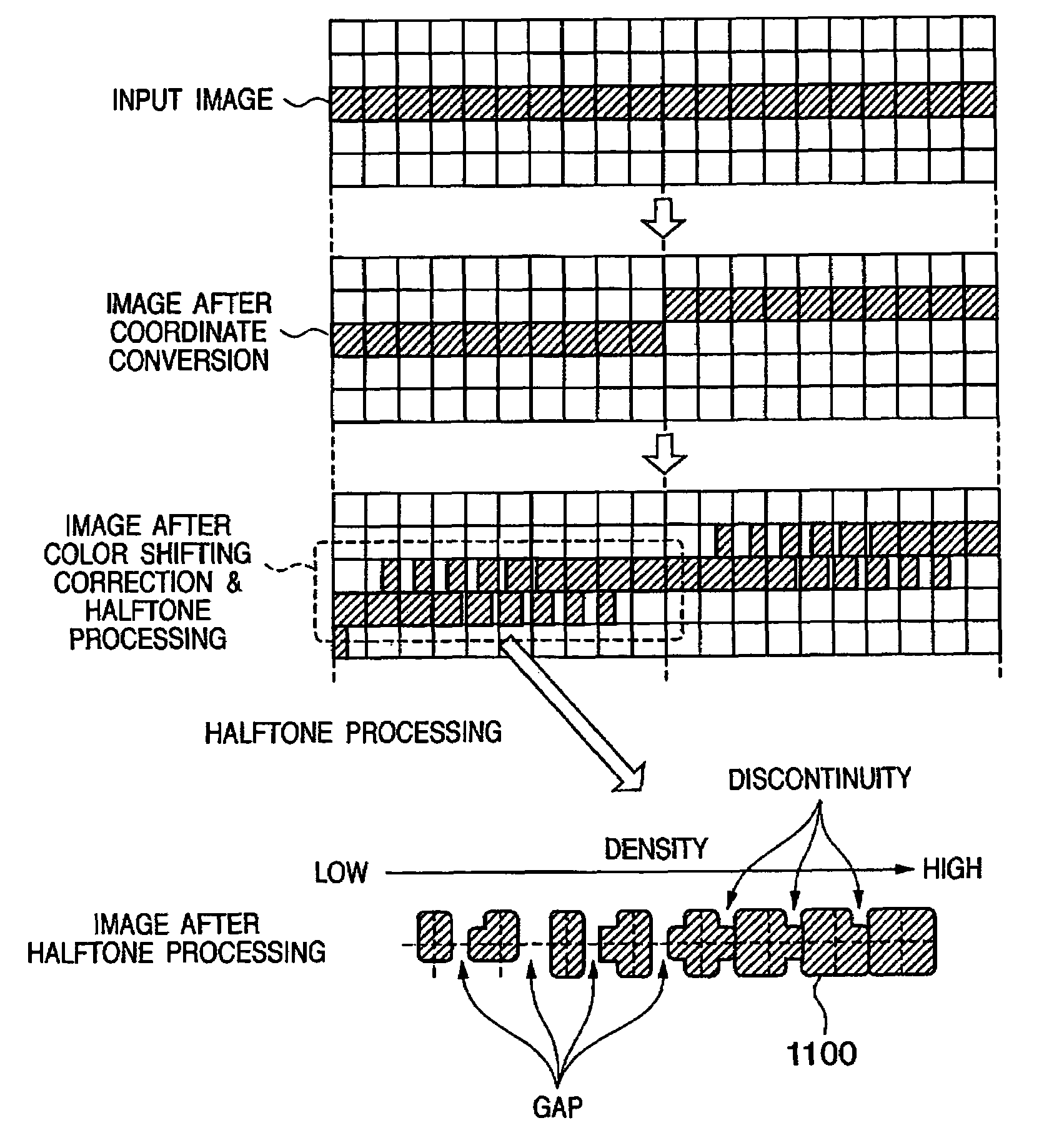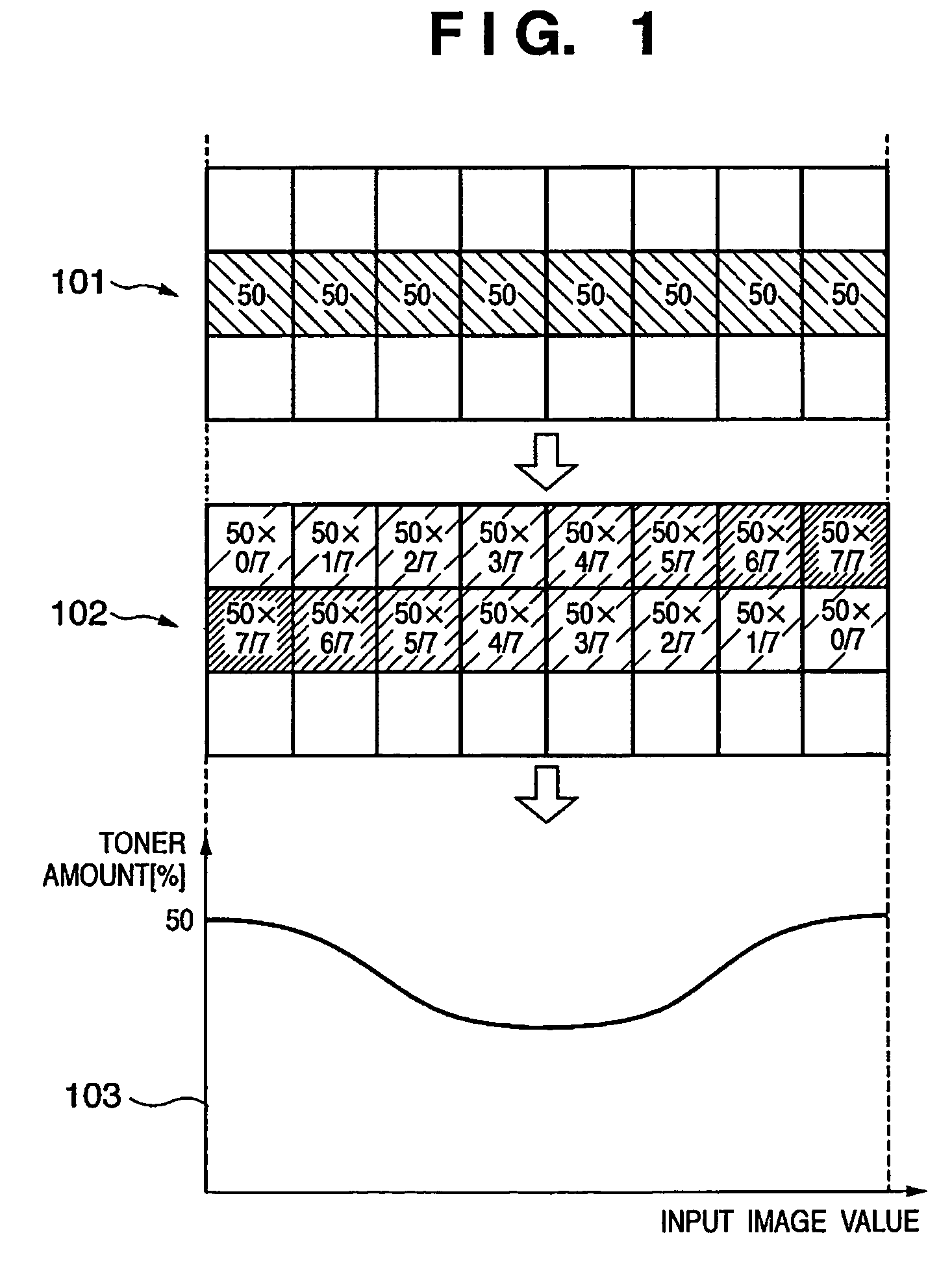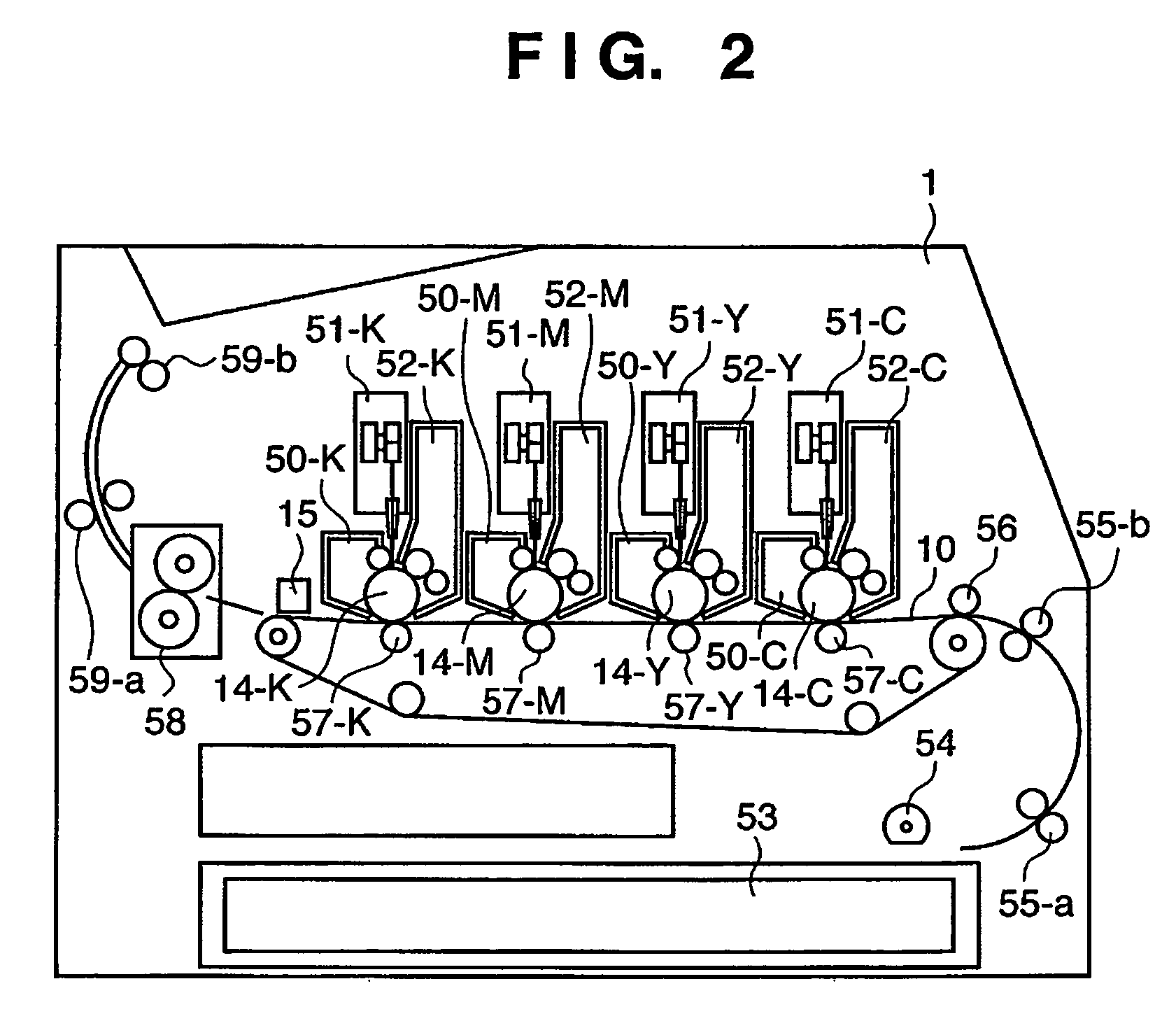Image forming apparatus and its control method
a technology of image forming apparatus and control method, which is applied in the field of color image technology, can solve the problems of difficult to obtain high-quality full-color images, take a long time to complete image formation, and remain unsolved, and achieve the effect of suppressing the generation of moir
- Summary
- Abstract
- Description
- Claims
- Application Information
AI Technical Summary
Benefits of technology
Problems solved by technology
Method used
Image
Examples
first embodiment
[0073]FIG. 2 is a sectional view showing the structure of an image forming apparatus according to this embodiment.
[0074]As shown in FIG. 2, the image forming apparatus of this embodiment has the structure of a 4-drum color laser beam printer.
[0075]This image forming apparatus mounts a transfer sheet cassette 53 in a lower portion on the right side of FIG. 2. Print media (print sheets, transparent sheets, or the like) set in the transfer sheet cassette 53 are picked up one by one by a paper feed roller 54 and are fed to image forming units by a pair of conveying rollers 55-a and 55-b. The image forming units are provided with a transfer conveyor belt 10 for conveying a print medium. The transfer conveyor belt 10 is tightened flat by a plurality of rollers in the print medium conveying direction (from the right to left in FIG. 2), and a print medium is electrostatically attracted onto the conveyor belt 10 at its most upstream portion. Four photosensitive drums 14-C, 14-Y, 14-M, and 14...
second embodiment
[0140]The second embodiment will be described below.
[0141]FIG. 12 is a block diagram for explaining the operation of the color shifting correction processing for correcting any color shifting generated due to the slope and curvature of the scan line in the second embodiment. The difference between FIG. 4 in the first embodiment and FIG. 12 is that the color shifting correction units 408C, 408M, 408Y, and 408K are replaced by units 408C′, 408M′, 408Y′, and 408K′. Also, in addition to the color shifting correction units 408C, 408M, 408Y, and 408K, exception processors 411C, 411M, 411Y, and 411K are added, and selectors 412C, 412M, 412Y, and 412K each for selecting one of outputs of the halftone processors 409C, 409M, 409Y, and 409K and those of the exception processors 411C, 411M, 411Y, and 411K are added.
[0142]Other arrangements are the same as those of the first embodiment, and differences will be explained below.
[0143]The color shifting correction units 408C′, 408M′, 408Y′, and 408...
third embodiment
[0175]The third embodiment will be described below.
[0176]FIG. 16 is a block diagram for explaining the operation of the color shifting correction processing for correcting any color shifting generated due to the slope and curvature of the scan line in the third embodiment. The difference between FIG. 12 in the second embodiment and FIG. 16 is that the engine 401 comprises exposure profile storage units 1403C, 1403M, 1403Y, and 1403K, and a print profile storage unit 1420. Based on this, color shifting correction amount arithmetic units 1407C, 1407M, 1407Y, and 1407K are arranged.
[0177]The exposure profile storage units 1403C, 1403M, 1403Y, and 1403K store the same data as in the color shifting amount storage units 403C, 403M, 403Y, and 403K in the first and second embodiments. That is, the exposure profile storage units 1403C, 1403M, 1403Y, and 1403K receive and hold the shifting amount information for respective image forming units of respective colors in the manufacturing process ...
PUM
 Login to View More
Login to View More Abstract
Description
Claims
Application Information
 Login to View More
Login to View More - R&D
- Intellectual Property
- Life Sciences
- Materials
- Tech Scout
- Unparalleled Data Quality
- Higher Quality Content
- 60% Fewer Hallucinations
Browse by: Latest US Patents, China's latest patents, Technical Efficacy Thesaurus, Application Domain, Technology Topic, Popular Technical Reports.
© 2025 PatSnap. All rights reserved.Legal|Privacy policy|Modern Slavery Act Transparency Statement|Sitemap|About US| Contact US: help@patsnap.com



